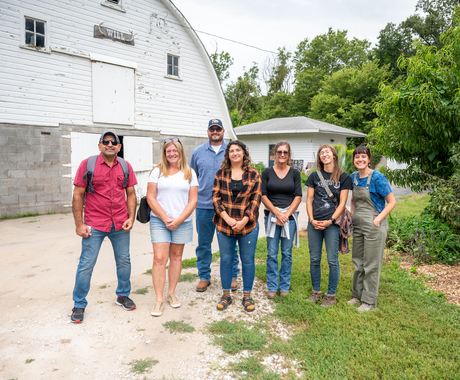Rhea Landholm, brand marketing and communications manager, [email protected], 402.687.2100 ext 1025
LYONS, NEBRASKA – Each day, 29 million students participate in the national school lunch program. The Center for Rural Affairs and Nebraska Food Council advocate for the Child Nutrition Act reauthorization, with inclusion of the Farm to School Act and Kids Eat Local Act, to bring responsible food choices into schools.
In spring 2019, Congress signaled an attempt to build a new Child Nutrition Act. This legislation is traditionally revised every five years and, while most program authorizations are permanent or extended through annual appropriations, a new Child Nutrition Act has not been reauthorized since 2010.
In 2013, the U.S. Department of Agriculture issued the first Farm to School grants to provide schools and organizations opportunities to bring production and nutritional education programs to classrooms. During the 2013-2014 school year, nearly $790 million worth of local food was purchased from farmers, ranchers, fishermen, and food processors, a 105 percent increase from the 2011-2012 school year.
“The implementation of the Farm to School and Kids Eat Local acts will lay the foundation for a more knowledgeable consumer base,” said Justin Carter, project associate with the Center for Rural Affairs. “In addition, it will bring benefits to producers and allow us to spend funds in our own states and communities.”
The Kids Eat Local Act would create a new, user-friendly local product specification option, allowing schools to specify “locally grown,” “locally raised,” or “locally caught” in their procurement language, then award to the lowest bidder who can meet that product specification.
“Program expansion would benefit child nutrition and also offer educational programs to students, giving them insight to where their food is grown and motivation to feed their fellow students,” said Carter. “As one rural Nebraska student told us after working in a school greenhouse, ‘We brag it up at lunch that we took care of their food. It’s great seeing something you did.’”
The Farm to School Act of 2019 would increase the mandatory annual funding to $15 million while increasing the maximum grant award to $250,000. Both pieces of legislation currently have bipartisan support.




